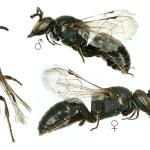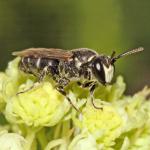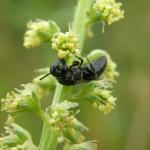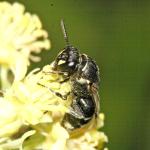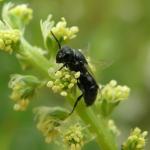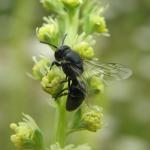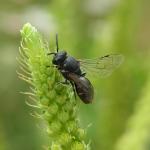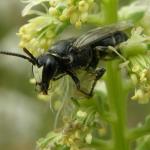Sphex signata Panzer, 1798, Vespa pratensis_homonym Geoffroy, 1785, Mellinus bipunctatus Fabricius, 1798, Philanthus bilineatus Gravenhorst, 1807, Prosopis albonasata Strand, 1912, Prosopis pratensis var nigrifacies Alfken, 1913, Prosopis berlandi Benoist, 1943, Hylaeus signatus berlandi (Benoist, 1943)
A large Hylaeus that is most often found at flowers of mignonette and weld.
Widely distributed throughout much of southern and central Britain, including the Channel Islands, but very local (though sometimes numerous where found). There are no records for Scotland or Ireland.
Its wider distribution encompasses much of Europe, North Africa and Anatolia (Koster, 1986). Recently found on Madeira (Smit & Smit, 2003).
Listed as Notable B by Falk (1991) (now known as Nationally Scarce Nb).
Generally open habitats, including calcareous grassland, quarries, coastal marshes and beaches, post-industrial sites and private gardens.
Univoltine; mid June to August or September.
Nests have been found in burrows in the vertical faces of compacted soil (both sand and clay), dead woody stems (such as bramble), in vacated nests of Colletes daviesanus Smith (C O’Toole, pers. comm.) and in crevices in mortar joints. On occasion nests have been encountered in dense aggregations.
A species of cabbage, wild mignonette, weld, fennel, bramble, sheep’s-bit and yarrow.
The gasteruptiid wasp Gasteruption assectator (Linnaeus) has been observed ovipositing in the nest burrows of this bee (O’Toole & Raw, 1991).
2012


